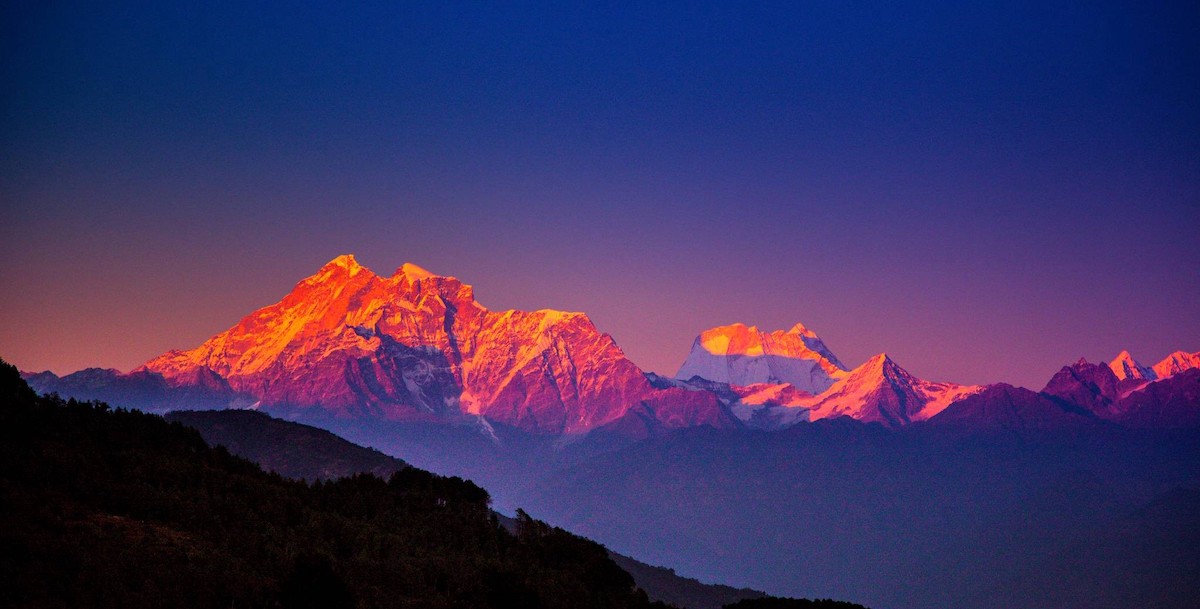The mass loss of glaciers in the Himalayas that had been invisible because it occurred below the surface has now been documented for the first time by researchers. The glaciers have lost enough mass to hold approximately 570 million elephants.
Satellites are unable to observe glacier changes occurring underwater, so the lake-terminating glaciers have been underestimated. Previous studies did not take this loss into account because the satellite data used only measure the lake's surface, not the ice that has been replaced by water below.
Previous assessments indicated that lake-terminating glaciers in the greater Himalayas had lost 6.5% of their total mass, according to researchers from Carnegie Mellon University, the Chinese Academy of Sciences, Graz University of Technology in Austria, and the UK's University of St. Andrews. In the central Himalayas, where glacial lake growth has been the most rapid, the study, which was published in the journal Nature Geoscience, found the greatest underestimation.

"Our estimates support the management of water resources in this sensitive mountain region, provide important data for glacio-hydrological models, and reduce uncertainties in total glacier mass loss.", the researchers write in their paper. With a high underestimation of 65%, Galong Co in this region is a particularly intriguing instance.
The implications of these findings for comprehending the effects of regional water resources and glacial lake outburst floods are significant. In a statement, lead author Guoqing Zhang from the Institute of Tibetan Plateau Research said, "We can more accurately assess the specific annual mass balance of these glaciers compared to land-terminating ones by accounting for the mass loss from lake-terminating glaciers. This further emphasizes how quickly glacier mass is being lost across the greater Himalaya."
The number, area, and volume of proglacial lakes in the region increased by 47%, 33%, and 42%, respectively, between the years 2000 and 2020. This extension brought about an expected glacial mass loss of around 2.7 Gt comparable to 570 million elephants or north of 1000 times the absolute number of elephants living on the planet. Analysts featured the need to comprehend the instruments driving glacial mass misfortune and the misjudged mass loss of lake-ending ice sheets worldwide.

"Over the long haul, we expect mass misfortune from lake-ending glacial masses to keep being a significant supporter of all out mass misfortune all through the twenty-first hundred years," Carnegie Mellon College co-creator, David Rounce expressed, noticing that glacial masses with critical mass misfortune may vanish all the more quickly contrasted with existing projections
For the first time, researchers have documented the massive loss of glaciers in the Himalayas that had been invisible because it occurred below the surface. There are approximately 570 million elephants in the glaciers as a result of this mass loss.
Satellites are unable to observe glacier changes occurring underwater, so the lake-terminating glaciers have been underestimated. Previous studies did not take this loss into account because the satellite data used only measure the lake's surface, not the ice that has been replaced by water below.
Previous assessments indicated that lake-terminating glaciers in the greater Himalayas had lost 6.5% of their total mass, according to researchers from Carnegie Mellon University, the Chinese Academy of Sciences, Graz University of Technology in Austria, and the UK's University of St. Andrews. In the central Himalayas, where glacial lake growth has been the most rapid, the study, which was published in the journal Nature Geoscience, found the greatest underestimation.
"The management of water resources in this delicate mountain region is aided by our estimates, which also provide important data for glacio-hydrological models and reduce uncertainties in total glacier mass loss." the researchers write in their paper. With a high underestimation of 65%, Galong Co in this region is a particularly intriguing instance.

The implications of these findings for comprehending the effects of regional water resources and glacial lake outburst floods are significant. In a statement, lead author Guoqing Zhang from the Institute of Tibetan Plateau Research said, "We can more accurately assess the specific annual mass balance of these glaciers compared to land-terminating ones by accounting for the mass loss from lake-terminating glaciers. This further emphasizes how quickly glacier mass is being lost across the greater Himalaya."
The number, area, and volume of proglacial lakes in the region increased by 47%, 33%, and 42%, respectively, between the years 2000 and 2020. This extension brought about an expected glacial mass loss of around 2.7 Gt comparable to 570 million elephants or north of 1000 times the absolute number of elephants living on the planet.
Analysts featured the need to comprehend the instruments driving glacial mass misfortune and the misjudged mass loss of lake-ending ice sheets worldwide. Co-author David Rounce of Carnegie Mellon University stated, "We expect lake-terminating glacier mass loss to continue to be a major contributor to total mass loss over the course of the twenty-first century," noting that glaciers with significant mass loss may disappear more rapidly compared to existing projections.
©️ Vygr Media Private Limited 2022. All Rights Reserved.
























